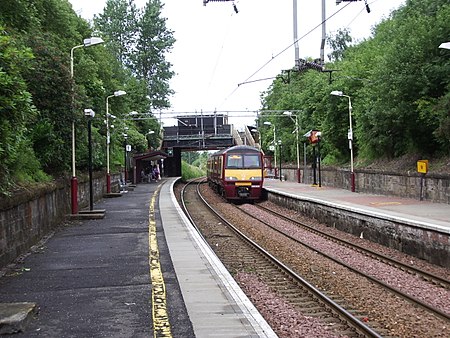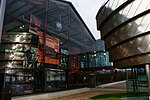Blairhill railway station
CoatbridgeFormer North British Railway stationsPages with no open date in Infobox stationRailway stations in Great Britain opened in 1871Railway stations in North Lanarkshire ... and 3 more
Railway stations served by ScotRailSPT railway stationsUse British English from January 2017

Blairhill railway station serves the Blairhill area of Coatbridge, North Lanarkshire, Scotland. It is 8½ miles (13 km) east of Glasgow Queen Street railway station. Situated on Blair Road, the railway station is managed by ScotRail and is served by trains on the North Clyde Line, comprising Class 334s on Edinburgh to Helensburgh services, and Class 318s and Class 320s on Airdrie to Balloch services.
Excerpt from the Wikipedia article Blairhill railway station (License: CC BY-SA 3.0, Authors, Images).Blairhill railway station
Auldhame Street,
Geographical coordinates (GPS) Address Nearby Places Show on map
Geographical coordinates (GPS)
| Latitude | Longitude |
|---|---|
| N 55.8665 ° | E -4.0427 ° |
Address
Auldhame Street
Auldhame Street
ML5 2EX , Gartsherrie
Scotland, United Kingdom
Open on Google Maps








